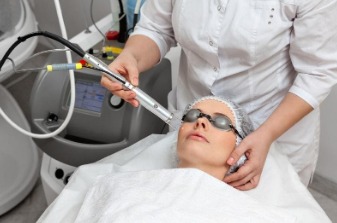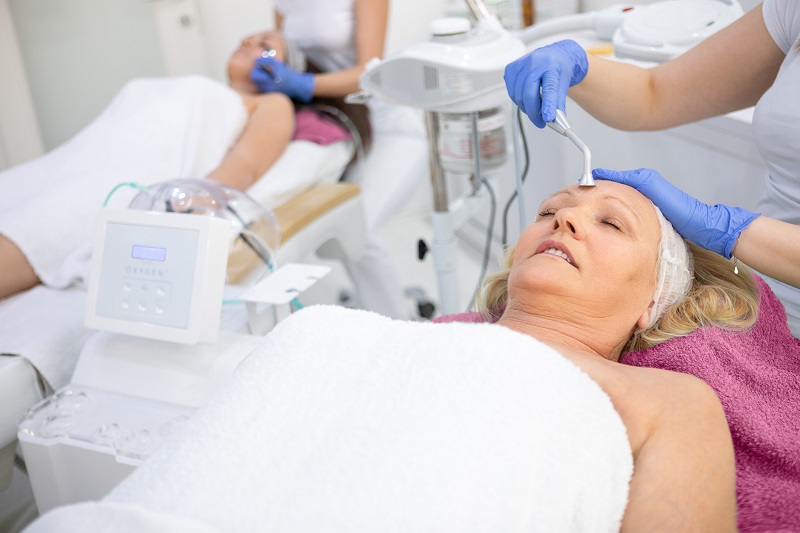LASER stands for Light Amplification by Stipulated Emission of Radiation, which is a single wavelength high-energy light source. This can be precisely focused on the transmission of light onto a small size area. Using this, a number of cosmetic procedures can be conducted to improve the top layer of damaged skin. Let’s see how the laser works and what cosmetic procedures you can get done at laser clinics.
Working of Laser

Laser is monochromatic, which means that it emits light in one wavelength of light. With the process of selective photothermolysis, it works in a variety of cosmetic applications. This process modulates the light frequency so that it produces heat on the particular tissue that you want to destroy. For doing this, the light beam’s wavelength is made in sync with the target color. As a result, brown spots, red broken capillaries, and other unsightly skin conditions can be addressed.
Here are a few cosmetic conditions that can be addressed in laser clinics:
- Hair Removal: The safety and success of hair removal with the laser process largely depend on the pigment of the hair and skin of the patient to be treated. Diode laser is often used for people with dark skin, but IPL is more effective for people with light skin color.
- Skin Tightening: Cosmetic laser clinics specialize in superficially tightening your skin. During the process, they induct control injuries to your skin, due to which collagen production increases and produces skin tightening effects. For high-end skin tightening results, CO2 laser proves to be an ideal choice.
- Wrinkles and Fine Lines: To address wrinkles and fine lines, both skin tightening and skin resurfacing Cosmetic Procedures are used. Sometimes, more potent ablative laser-like CO2 laser is also used for removing the thin outer layer of skin and stimulate the growth of new collagen fibers. This treatment also helps in removing warts, skin tags, etc. Pulse dye laser is also found to be successful in such treatments as it mainly targets the blood vessels by breaking it and leaving you a natural skin tone.
- Acne Scars: CO2 laser process remains a standard process for removing deep acne scars. However, recent developments like fractional laser have also shown significant success in getting rid of acne scarring. If you have active acne on your skin, the LED light therapy is also recommended which has proven to be quite efficient.
- Unwanted Tattoo: If you have an unwanted tattoo that you want to get rid of, then (Intense Pulsed Light) IPL tattoo removal therapy can be effective. In this therapy, the top layer of the skin that contains the tattoo is burned down. While the treated area heals itself by producing new skin growth, the tattoo becomes less noticeable.
- Precancerous Lesions: If you have precancerous lesions on your body, then surgeons would want to remove them with a scalpel to ensure complete removal and clear border. Apart from ensuring that the cancer receives clear margins, they also give the pathologist a sample to examine and determine what it exactly was. For removing a precancerous growth from your skin, like actinic keratoses, that could have become malignant and developed into cancer, laser clinics use CO2 like ablative laser to remove them and keep you safe.
- Vascular Lesions: These lesions often include ruptured blood vessels, spider nevi, spider veins, birthmarks, hemangiomas, port wine stains, and other unsightly conditions on your body. IPL is the best choice for such irregularities on the skin, as it is not invasive and is effective in treating such lesions successfully.
- Pigmented Lesions: Such lesions include melasma, age spots, sun spots, and other types of hyperpigmentation. They can be effectively removed with laser treatments like fractional laser, IPL, and pulsed dye.

Read Also: How to Maintain Copper in My Body to Stay Healthy?
When you visit the laser clinics, you will have one-on-one interaction with a laser therapy specialist. Let them know your symptoms and expectations, depending on which they will assess your condition and create a treatment plan for you. Once the procedure is done, they will ask you to follow certain precautionary measures that can accelerate your recovery process and ensure that your treatment turns out to be a success without any future complications.









